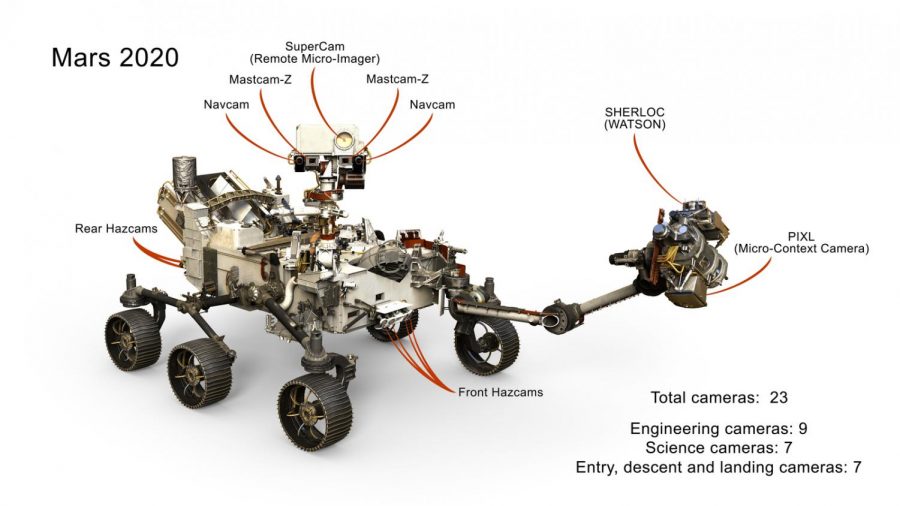Everything to Know About the New Mars Rover
With the growing global interests in the final frontier, it’s important to stay up-to-date on any new developments in space technologies and exploration.
On February 18th, 2021, at 20:55 UTC time, NASA’s Perseverance Rover, also known as Percy, landed on the surface of Mars. Made as the spiritual successor of the Curiosity Rover, the Perseverance Rover’s purpose is to perform outer world experiments and search for any remnants of possible extraterrestrial life on the surface of Mars.
But how exactly does the Perseverance Rover do this?
The Perseverance Rover possesses a 2.1 meter (6 ft. 11 in.) robotic arm and sampling mechanism to collect samples of Mars’s surface. These samples are then moved to a secondary arm that stores them and moves them to different operating systems below the rover. Beneath the rover is multiple testing appliances that determine the sample’s volume and imaging, and hermetically seal it for protection. It even possesses a station that turns carbon dioxide into oxygen!
However, the real magic comes from its explorative capabilities. Due to possessing a thermoelectric power generator, Percy can stay operational for long periods of time without relying on solar panels, utilizing the power of nuclear energy. Having over 23 different cameras covering its chassis ensures that not a single grain of red sand is overlooked! These cameras all look for different minerals and objects at different frequencies simultaneously in hopes of finding ancient microbial environments. This rover is also carrying a very special self-propelling payload: Ingenuity.
Ingenuity, or Ginny for short, is an experimental off-world aircraft that will be attempting the first-ever powered flight on the surface of Mars. Sporting state-of-the-art carbon fiber propellers and a solar panel on top, Ginny will need to fly in an atmosphere 1/100th as thick as the Earth’s. “I think it’s very exciting because of the aircraft,” Mr. Rogers said, the head of the robotics club at Whitman. “That aircraft is going to be able to provide a much wider range of information that we can get to understand on Mars. It’ll also give us a better chance to not fall into a crater while exploring.” The Mars helicopter’s trial flights will start later this April, so be sure to stay tuned and see if it’ll triumph.
The future in space is now, all we need to do is grasp it.
Sources:
https://www.jpl.nasa.gov/news/press_kits/mars_2020/download/mars_2020_landing_press_kit.pdf
https://www.jpl.nasa.gov/news/press_kits/ingenuity/landing/














